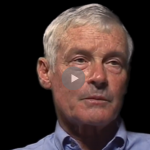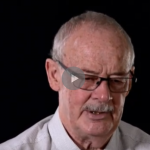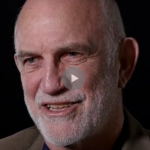

After the Republic of Korea, Australia provided the most military support to South Vietnam and the United States. More than 61,000 Australian service members served in the war between 1962 and 1972. While Australia’s forces never exceeded 8,000 troops at a given time, they were wide-ranging: infantry, airborne, medical and armored units, helicopters and planes, and even a naval destroyer.
Overview
In the summer of 1962, a group of 30 Australian military advisors — known colloquially as “the Team” — arrived in Vietnam. Ngo Dinh Diem, the leader of South Vietnam, had repeatedly requested security assistance from the United States and its allies. In an effort to undermine communist propaganda that depicted South Vietnam as a mere “puppet state,” the U.S. sought to involve other nations in the fight against communist insurgents in the north. “The Team” began Australia’s involvement in the conflict.
By 1964 that involvement had begun to grow rapidly. In August of that year, the Royal Australian Air Force (RAAF) had transport aircraft in the port of Vung Tau. As the U.S. escalated the war in 1965, Australia contributed a battalion of troops to fight alongside a U.S. airborne brigade in Bien Hoa province. By the time Australia’s governor-general formally declared an end to Australia’s involvement in January 1973, more than 61,000 Australian troops had served in Vietnam. Over a ten-year period, more than 500 Australians were killed and some 3,000 were wounded. They are remembered on the Australian Wall of Faces.
As in the United States, the war caused tremendous social and political tension in Australia. In particular, many Australians opposed the introduction of military conscription, and protested accordingly. As the death toll rose in Vietnam, the Australian public grew more uneasy about the country’s involvement — public debate in Australia was increasingly defined by the issue.
Vietnam veterans in Australia, like their U.S. counterparts, sometimes became the subjects of negative public sentiment about the war. Some of them were even excluded from participating in Anzac Day parades, as veterans of previous wars considered them unworthy of the tradition. Australia’s Vietnam veterans were finally honored with a “Welcome Home” parade in 1987, and a campaign was begun that led to the construction of the Vietnam Forces National Memorial in Canberra.
VVMF maintains a robust partnership with the Australian National Vietnam Veterans Museum in Phillip Island, Victoria, Australia and thanks them for their ongoing support in bringing to life the Australian Vietnam War experience.


Six countries served alongside the United States in Southeast Asia. The bonds between these allies are seen in items left behind at The Wall as well as the friendships between these nations’ veterans today.
One of these items is an Australian Slouch Hat. The slouch hat is a descendant of felt hats worn by 19th C armies, and today is considered to be a national symbol of the Australian nation. Another item left at The Wall was a Fosters beer can. Foster’s Lager is an internationally distributed brand of lager, also known as a quintessential Australian beer brand. These items, as well as the flags of the six countries who fought alongside the U.S. in Southeast Asia, are currently a part of The Wall That Heals mobile exhibit.
 Peter Jarratt, Australian Army, about Training Team Vietnam
Peter Jarratt, Australian Army, about Training Team Vietnam
Peter Jarratt served with the Australian Army Training Team Vietnam, the first Australian unit to arrive, the last to leave, and the most highly decorated of the Vietnam War.
 Colin Elliott, Royal Australian Navy, about the gun line
Colin Elliott, Royal Australian Navy, about the gun line
Colin Elliott served with the Royal Australian Navy on HMAS Hobart, as part of the ‘gun line’ providing naval gun support to ground forces.
 Wayne Brown, Australian Army, about National Servicemen (draftees)
Wayne Brown, Australian Army, about National Servicemen (draftees)
Wayne Brown was called up for National Service and went to Vietnam as a medic. He was awarded the Military Medal for bravery.
 Roy Mundine, Australian Army, Indigenous Serviceman
Roy Mundine, Australian Army, Indigenous Serviceman
Prior to serving two tours in Vietnam, Roy Mundine had served in Malaya in 1959. He was mentioned in dispatches in 1969 when he had continued to command his section after being severely wounded by a mine and until he could safely be reached. He later became the Australian Army’s first Indigenous Elder. HEAR ROY’S STORY
 Barry Heard, Australian Army, about post-traumatic stress disorder
Barry Heard, Australian Army, about post-traumatic stress disorder
Barry Heard served in Vietnam in 1967 as a national serviceman. After many years he suffered a breakdown and was diagnosed with severe post-traumatic stress disorder. Supported by his family he recovered and wrote a successful book about his life and experiences.
 Graham Walker, Australian Army, about Agent Orange
Graham Walker, Australian Army, about Agent Orange
Graham Walker served as an infantry commander in Vietnam. After the war he fought for recognition of Agent Orange as a cause of cancers in veterans.
- VIDEO: Australia; Vietnam War — Britannica.com
- VIDEO: “Australian Diggers in Vietnam War – 1968”
- VIDEO: “Australian, New Zealand and U.S. Army – Operation Ingham Vietnam War 1966”
- Australian Wall of Faces
- National Vietnam Veterans Museum [Australia]
- “What Was Australia Doing in Vietnam?” — The New York Times
- “Vietnam War 1962-75” — Australian War Memorial


A very close thing indeed
By Ashley Ekins
The battle of Long Tan was Australia’s most costly battle in Vietnam.
Australian soldiers fought in scores of fierce actions during the war in Vietnam. Few were as intense or dramatic as the action in the Long Tan rubber plantation on 18 August 1966. An isolated infantry company of 108 men, cut off and outnumbered by at least ten to one, withstood massed Viet Cong attacks for three hours. They suffered the heaviest Australian casualties in a single engagement in Vietnam, but prevailed against the odds. Their valiant stand became a defining action of the war.
More Information:

